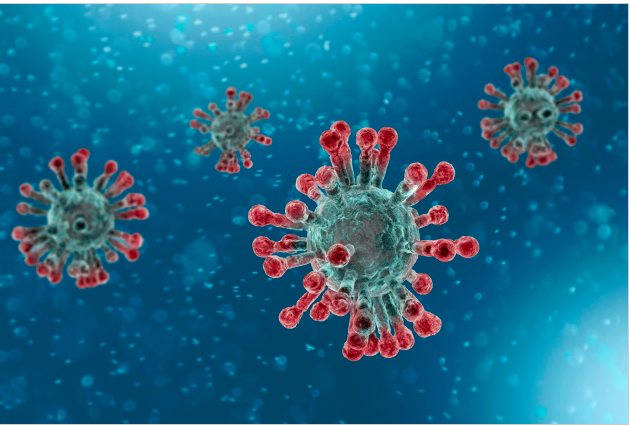Study: Tracking the Evolution of SARS-CoV-2 Virus Mutations
By Dorothy L. Tengler via Multibriefs
Thursday, November 05, 2020

On Oct. 29, 2020, there were 87,164 new cases of coronavirus disease 2019 (COVID-19) reported in the U.S., according to data from Johns Hopkins University — the most new cases in a single day since the pandemic began. The staggering total comes as the number of coronavirus cases in the U.S. nears 9 million in the first 9 months of the pandemic.
Experts warn that death rates could triple by mid-January 2021.
Basically, since the beginning of the pandemic, severe acute respiratory coronavirus 2 syndrome (SARS-CoV-2) has taken a "whatever works" strategy to ensure its replication and spread. If the virus can take up residence in the lungs, the disease can progress to pneumonia as more cells become infected and inflamed. Part of the damage is caused by the virus, but much of the damage is due to the immune system itself trying to destroy and get rid of those infected cells.
The disease can go in two different directions. The immune response can remain stable and regain control over the virus, eventually clearing it through T cell and antibody activity. Or the immune system can freak out and start to overrespond, churning out more and more inflammatory cytokines, in a frantic attempt to wipe out the virus. The second path causes substantial cell death in the lungs, resulting in the most severe infections, acute respiratory distress syndrome, and even death.
However, in a new study, University of Illinois researchers and students found that the virus is honing the tactics that may make it more successful and more stable. The students tracked the mutation rate in the virus's proteome — the collection of proteins encoded by genetic material — through time, starting with the first SARS-CoV-2 genome in January and ending more than 15,300 genomes later in May.
The team found some regions still actively spinning off new mutations, indicating continuing adaptation to the host environment. But the mutation rate in other regions showed signs of slowing, coalescing around single versions of key proteins. It is bad that the virus keeps changing, but It could be good for treatment options for COVID-19 that certain proteins are stabilizing.
According to first author Tre Tomaszewski, a doctoral student in the School of Information Sciences at Illinois, in vaccine development, you need to know what the antibodies are attaching to because new mutations could change everything, including the way proteins are constructed. The research team documented a slowdown in the virus' mutation rate starting in April after an initial period of rapid change. This included stabilization within the spike protein.
Within the spike, an amino acid at site 614 was replaced with another mutation that took over the entire virus population during March and April. In other words, that spike was a completely different protein at the very beginning than it is now, 7 months later. The spike protein, which is organized into two main domains, is responsible for attaching to human cells and helping inject the virus's genetic material, RNA, inside to be replicated.
The 614 mutation was associated with increased viral loads and higher infectivity in a previous study, with no effect on disease severity. Yet, in another study, the mutation was linked with higher case fatality rates. Sites within two other notable proteins also became more stable starting in April, including the NSP12 polymerase protein, which duplicates RNA, and the NSP13 helicase protein, which proofreads the duplicated RNA strands. All three mutations seem to be coordinated with each other.
These are regions to watch because increasing non-random variability in these proteins suggests the virus is actively seeking ways to improve its spread. These two proteins interfere with how our bodies combat the virus. They are the main blockers of the beta-interferon pathway that make up our antiviral defenses. Their mutation could explain the uncontrolled immune responses responsible for so many COVID-19 deaths.
Researchers hope the exploration of mutational pathways can anticipate moving targets for therapeutics and vaccine development as we prepare for the next wave. By sequencing, uploading, and curating genome samples researchers will continue to keep track of this virus.
Dorothy L. Tengler, MA, is a freelance medical writer/communication specialist with nearly 20 years of experience in the pharmaceutical and medical communication industries. She has developed educational and medical marketing materials, including monographs, slide kits, health articles, primary and review manuscripts, and pharmaceutical sales training materials.
|
